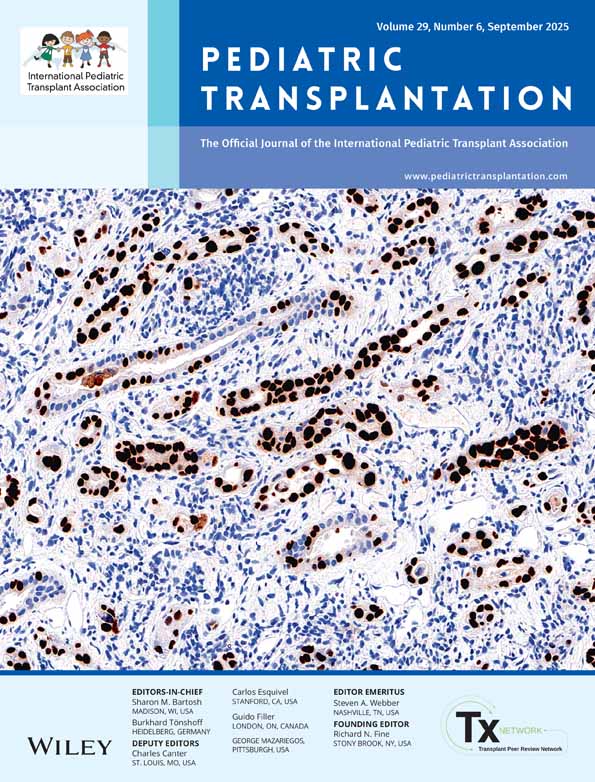Development of liver size and perfusion after reduced-size liver transplantation in children
Abstract
Abstract: The technique of segmental liver transplantation (s-LTx) provides a method to overcome the shortage of suitable livers for small recipients. Patient survival rates are parallel to those obtained with whole liver transplantation (w-LTx). For long-term rehabilitation, adaptive liver growth and adequate perfusion is crucial; however, morphometric and hemodynamic parameters in growing children with s-LTx are not available. Seventeen children who received a s-LTx and 25 with a w-LTx who had follow-up evaluation 1 and 2 yr after LTx were studied. Mean age at time of transplantation was 4.3 ± 3.5 yr for s-LTx and 10.3 ± 6.0 yr for w-LTx, mean height 98 ± 21 cm and 122 ± 30 cm respectively. At follow-up evaluation mean values for liver enzymes, bilirubin and prothrombin time were in the normal ranges for both groups. Liver dimensions were measured by gray scale ultrasound, and hemodynamic parameters by Doppler sonography in the portal vein and hepatic artery using an Acuson 128 machine. Maximal (Vmax), minimal (Vmin) and time-average velocity (TAV) were measured and the resistive index (RI) calculated. We found that 1 and 2 yr after LTx liver dimensions were at a mean in the upper normal range of healthy controls. Spleen size was above the normal range and did not show any tendency towards regression. Mean Vmax in the hepatic artery in s-LTx and w-LTx was 48 cm/sec vs. 28 cm/sec after 1 yr and 30 cm/sec vs. 35 cm/sec after 2 yr, the RI 0.66 vs. 0.55 and 0.59 vs. 0.73, respectively (p for all parameters > 0.05). Maximal portal vein flow was 25 cm/sec in s-LTx vs. 29 cm/sec in w-LTx. Blood flow calculated by vessel diameter and TAV showed no statistical difference between both groups. In conclusion, liver size after s-LTx and w-LTx was increased to the upper normal range, and portal vein blood flow velocities were within the normal range. Vmax in the hepatic artery was reduced in s-LTx; however, the reduction was to the same extent as in w-LTx. In the view of long-term functional adaptation, s-LTx is not inferior to w-LTx.




